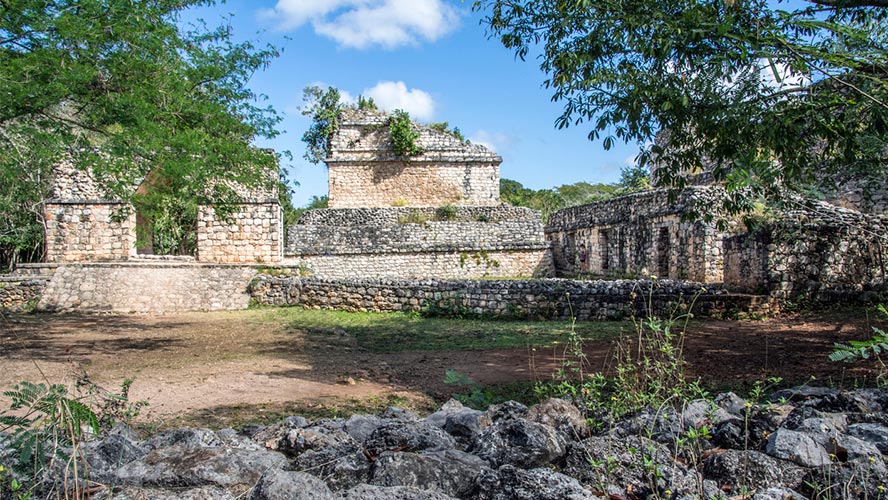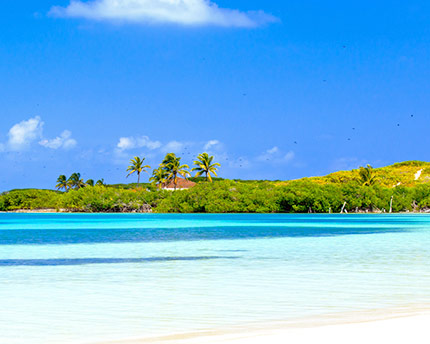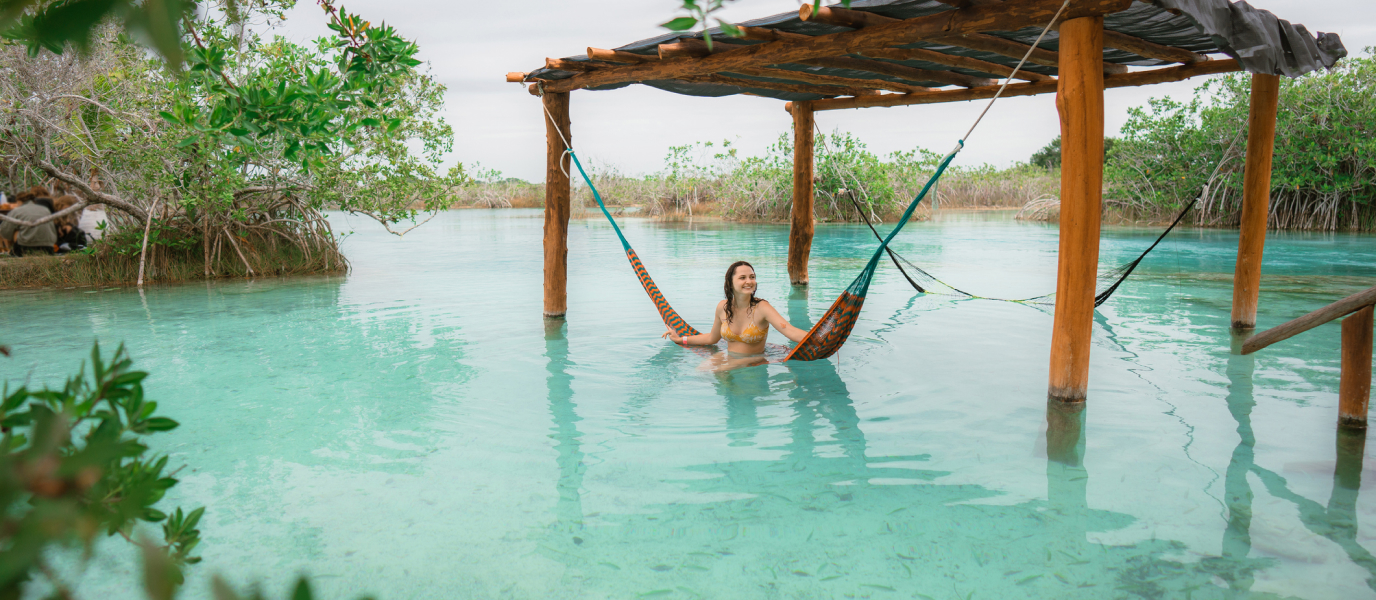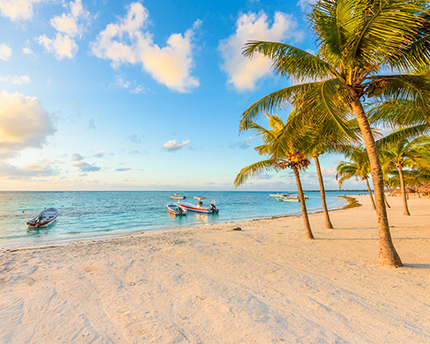The Yucatan Peninsula is a truly magical territory where you can discover and enjoy a set of natural wonders that you will not find anywhere else in the world. Places such as the Sian Ka’an Biosphere Reserve, the Bacalar Lagoon, the beaches of Riviera Maya, and, of course, Las Coloradas, a group of lagoons with pink waters that are quite a spectacle.
An otherworldly landscape where the blue and green tones of the sea contrast with the white sand, green jungle, and, above all, the pink and reddish tones of the lagoons. A magical place, inhabited by flamingos, as pink as the water, and bathed by the inclement tropical sun. A natural wonder that, of course, you have to visit the next time you travel to Cancun and the Rivera Maya.
- A natural pink jewel
- Las Coloradas: an adventure in the middle of nature
- What else can you visit on the way to Las Coloradas?
A natural pink jewel
Located on the north coast of the Yucatan Peninsula, La Coloradas are part of the protected natural area of the Ría Lagartos Biosphere Reserve. Nonetheless, these lagoons are actually seawater ponds used for sea salt harvesting. The sun slowly evaporates the millions of gallons of water stored in the vast reservoirs, producing millions of tons of salt harvested each year. A natural process that has been practiced in the Las Coloradas area since ancient Mayan times.
And it’s the abundance of salt in the water (which can exceed 4 times that of the sea) and the presence of highly resistant microorganisms the reason for the pink-colored water of Las Coloradas. The more salt in the water, the more intense the pink hue, a natural phenomenon that results in a totally spectacular landscape.
In addition, both the lagoons and the surrounding areas are home to different species of flora and fauna, some endemic and others in danger of extinction. In short: Las Coloradas is a place of great ecological value.
Las Coloradas: an adventure in the middle of nature
Contemplating the landscape of Las Coloradas is a unique experience, and Vacaciones Barcelo offers you all-inclusive options to visit the area. Departing from Cancun and the Riviera Maya and visiting other attractions in the area, the plan is perfect for enjoying this incredible natural attraction without worrying about anything.
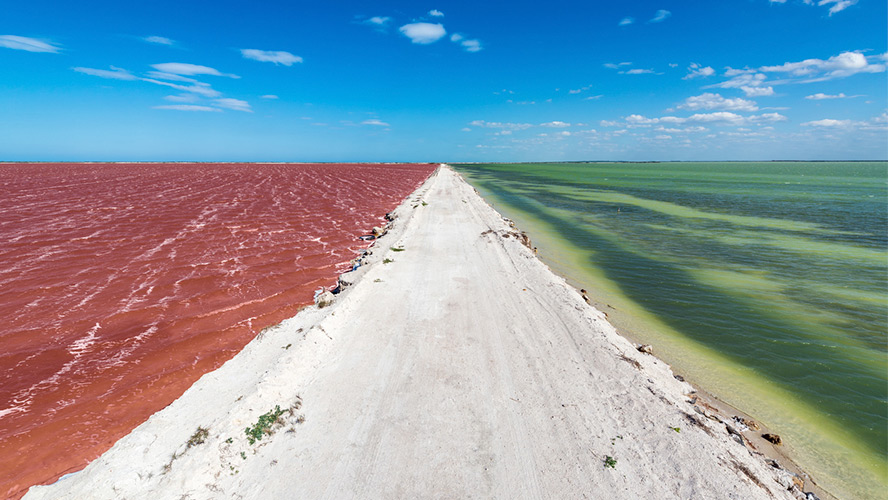
To better enjoy the show, it’s best to visit Las Coloradas between March and July. This is because it’s the driest and hottest season, and the pink color of the water is more intense. The color varies from yellow and orange up to pink and reddish, depending on the conditions of the reservoirs. And if you visit the site at noon, more or less between 12 and 3pm, even better. The pink tone of the water is more intense when the sun is at its highest point. Also, April, May, and June are the best months for flamingo sightings.
Another important detail is that swimming in the pink waters is prohibited. If you do, you’ll not only contaminate the salt production but can suffer skin injuries due to the high salinity of the water. Also, don’t forget to be well protected against the sun (sunglasses, cap or hat, biodegradable sunscreen…) and bring enough water to stay hydrated. In Las Coloradas there are some small shops and restaurants, but it is better to be well prepared.
A tip: don’t forget that you are in an environment of high ecological value, and it’s everyone’s responsibility to take care of it properly. Follow the directions and respect the wildlife as much as possible (turtle nests on the beach, groups of flamingos, vegetation, dunes…).
What else can you visit on the way to Las Coloradas?
The trip from Cancun and the Riviera Maya to Las Coloradas takes a while. About 3.5 hours by car. So, it’s worth organizing a full-day excursion to visit this beautiful place and take the opportunity to visit other wonders along the way as well.
Las Coloradas beach
Miles of white sand and turquoise waters. Although strictly speaking, the beach in the small town of Las Coloradas is already in the Gulf of Mexico, it looks just like a Caribbean beach. So, if you are a beach lover, don’t forget to take your swimsuit, towel, and parasol; you will enjoy the beauty of this place.
Cancunito Beach
If Las Coloradas beach is at one end of the salt mine, Cancunito beach is on the other side. It is an equally beautiful beach but still more virgin than the other. In addition, like the entire coast of this area of the Yucatan Peninsula, the beach is a protected sea turtle sanctuary. Species such as hawksbill, white turtle, and loggerhead spawn there.
Ría Lagartos Biosphere Reserve
This huge estuary, about 50 miles long, is a natural treasure of enormous ecological value. Las Coloradas is home to all kinds of flora and fauna, from mangroves and chit palms to spider monkeys, crocodiles, and pink flamingos, among many others species.
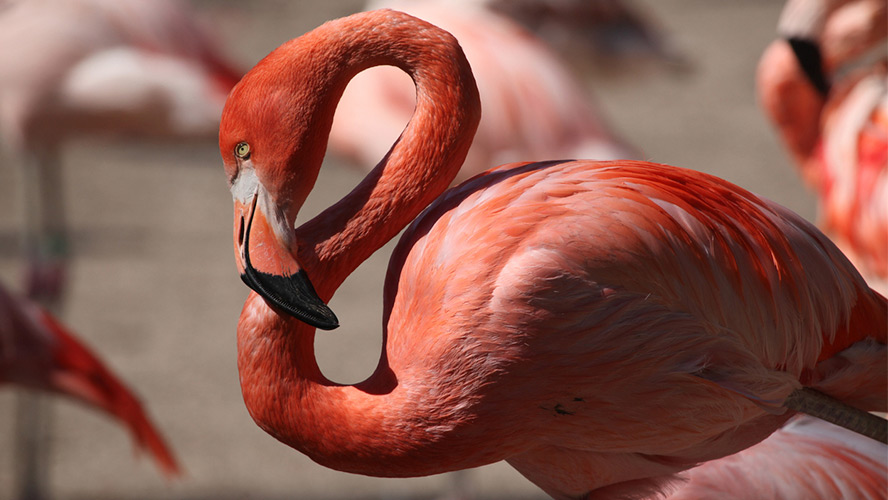
Mayan bath
One of the experiences that have become quite popular lately is the Mayan bath. It takes place on a beach also within the Reserve, and it’s based on an ancient Maya practice. The bath covers the skin with white clay that has excellent properties as a natural exfoliant. Later, the same boat takes you to another beach where you can swim to cleanse your body.
Tizimín
Just under an hour from Rio Lagartos, you can make a stopover in this beautiful Yucatan town. The Main Park and the church of the Three Holy Kings –Tizimín is famous for its feast of the Three Wise Men–, from the 17th century, are only part of its charming historic center. In addition, you can enjoy the outstanding traditional Yucatan-style cuisine during your visit to this lovely town.
Ek Balam archaeological site
Between Tizimín and Valladolid, you can visit this ancient Maya city that had its moment of maximum splendor between 600 and 900 AD. The site features various temples and palaces, as well as incredibly well-preserved decorative elements. The area known as the Acropolis is considered the heart of this prosperous city of the old Maya World.
